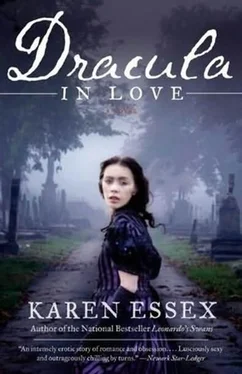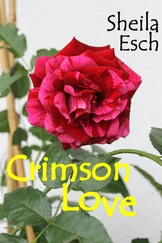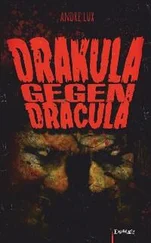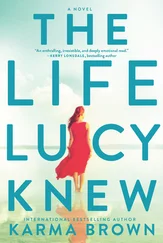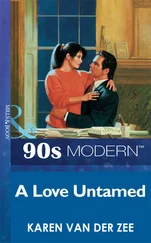Perhaps of all of us, Headmistress came to the most surprising and happiest end. As Kate predicted, Miss Hadley’s School for Young Ladies of Accomplishment closed its doors as wider doors of education opened to girls. At the age of sixty-five, Headmistress finally used the skills she had taught to other females for almost fifty years and married a handsome, widowed grandfather five years her junior.
Though I do muse on what might have been, I do not regret my decision to stay with Jonathan. He and I do not bring up the past, but our exploits with the immortals opened up a world of infinite sensuousness, which we continue to explore with each other and enjoy. Jonathan no longer has the youthful exuberance that had drawn me to him, but I recognize that I am largely responsible for its loss. On the other hand, he is a well-respected solicitor and a loving father.
Our son, Morris, is a sanguine child. As a baby, he nursed furiously-almost violently-but since that time, he has proven to be a happy little boy. Our daughter, Lucy, is just a baby, and I am not sure what sort of temperament she will develop. My labor with her was shockingly easy. She came out of me without a cry, and when the midwife lifted her up, she stared back at me with my own green eyes. “Look at this,” the midwife said, pointing to the wine-colored stain on her thigh. “She has the exact same birthmark as her mother.”
As for me, I have evidence that I still have my powers, and that if I desired, I could develop them. I often hear others’ thoughts, which is not as interesting as it sounds, for with the exception of children, most minds are cluttered with the mundane. I cannot say that I crave blood, though I look forward to a time when I will drink it again-and this I will do, though I cannot say when. Once while Jonathan and I were making love, he was at the height of arousal and encouraged me to take his blood. Though it brought both of us ecstasy, it later made him feel weak and ill, so I have not done it again.
When people see me, they always comment that I have not changed in many years, but I am only just approaching my thirtieth birthday. We shall see what the future brings.
A few weeks after the death of Morris Quince, Jonathan went into his office to discover that the title to the Count’s London mansion had been transferred to my name, along with a substantial endowment for its upkeep. The Count’s staff had disappeared, so I hired my own minimal one. We do not live there-we are more comfortable in our home in Pimlico-but I visit it often by myself, reading the Count’s books or lying in the big bed in which I found myself after he had rescued me from the asylum. It is in these two rooms that I most feel his presence. He has not come to me since the day he vanished, but I am aware of him, though I cannot locate him in time or space. Yet I know that he still exists somewhere, and, as he said before he vanished, it is not finished between us.
I have no idea what happened after Jonathan and I left the mansion on that last evening. By the time I took possession of the house, it had been long cleared and tidied, looking exactly as if the Count still lived there. No one was charged with a crime, and, undoubtedly owing to Godalming’s name and connections, there were no newspaper reports, nor was there a public scandal of any sort. Morris’s body was to be sent back to his family in New York but was lost at sea in a shipwreck and never recovered. My heart bleeds for his parents, and if I ever find myself in America, I will pay them a visit and tell them what a heroic man their son was.
I do not know what will become of the red-haired writer’s story. Despite its sensational tone and its gripping narrative, it has failed to sell many copies or capture critical acclaim. Like almost all works of fiction, I am sure that it will be read by a few, and in the coming years, all copies not thrown out with the rubbish or lost in fires or other disasters will rot in musty libraries until the shelves are purged to make way for newer and more relevant stories. But I have said my piece and corrected the record so that in the future, my children, should they ever come to associate their parents with that work of fiction, will know the truth.
My dear Mina, why are men so noble when we women are so little worthy of them?”
“A brave man’s blood is the best thing on this earth when a woman is in trouble.”
Bram Stoker wrote these lines and many like them in his novel Dracula without a trace of irony. Today, the text is often read as a cautionary tale against the unbridling of female sexuality at the end of the nineteenth century. In this vein, I wanted to turn the original story inside out and expose its underbelly or its “subconscious mind,” by illuminating the cultural fears, as well as the rich brew of myths and lore, that went into Stoker’s creation.
At the time Dracula was written, while some women were taking to the streets for emancipation, the majority clung feverishly to Victorian ideals of purity and piety, which were considered the norm. I chose to portray Dr. Seward’s asylum as it would have been-not with an insect-eating madman but full of female patients incarcerated for what we today would consider normal sexual appetites. My portraits of the asylum’s cases are largely taken from original late-nineteenth-century physicians’ notes in the archives of Bethlem Royal Hospital, once known as Bedlam. (The obvious exceptions are Von Helsinger’s experiment to improve the female sex through the transfusion of male blood, and the inference that Lucy and Vivienne died of hemolytic reactions from receiving incompatible blood types.)
I experienced two extraordinary coincidences in conducting my research. I had set the place of Mina’s birth as Sligo before I discovered that Stoker’s mother was born there and had raised her son on its ghost stories and folklore. Secondly, I had fabricated the character of a journalist who had been Mina’s school chum and named her Julia Reed long before I read in Stoker’s notes that he had toyed with including a character named Kate Reed who was to be Mina’s friend. Stoker’s original setting for Dracula’s home was Styria, and I decided to use that location, if only to remind vampire fans that the Count’s Transylvanian origin was Stoker’s invention, and that he entertained other possibilities.
The vampire that sprang from Bram Stoker’s mind has subsequently spawned hundreds of variations. I wanted to illuminate the historical and mythological sources for the creature that so ignited my childhood imagination, while revisiting the lost landscape of female magical power that clearly informed Stoker’s tale and shaped vampire lore. My fond hope is that both readers and the eternal essence of Mr. Stoker, whom I revere for his ingenious work, will take the book in the spirit of fun and adventure in which it was written.
I’d like to thank not only those who helped with this novel but everyone who continues to make my literary life possible. At Doubleday, Bill Thomas and Alison Callahan gave me room to venture into new territory, and Alison, with her sure hand, keen instincts, and collaborative spirit, wrestled with and for me in its creation. I appreciate the genuine enthusiasm and creative thinking of Todd Doughty and Adrienne Sparks, and also of Russell Perrault and Lisa Weinert at Vintage/Anchor. I thank creative director John Fontana for giving me beautiful books; Nora Reichard for her patience and diligence; and the support I receive from everyone on the staffs. I am blessed to call Doubleday and Vintage/Anchor my publishers.
Amy Williams in New York, and Jennie Frankel and Nicole Clemens in Los Angeles, are not only representatives but creative partners and loyal friends. I would be lost without this triumvirate of dynamic women.
Читать дальше
